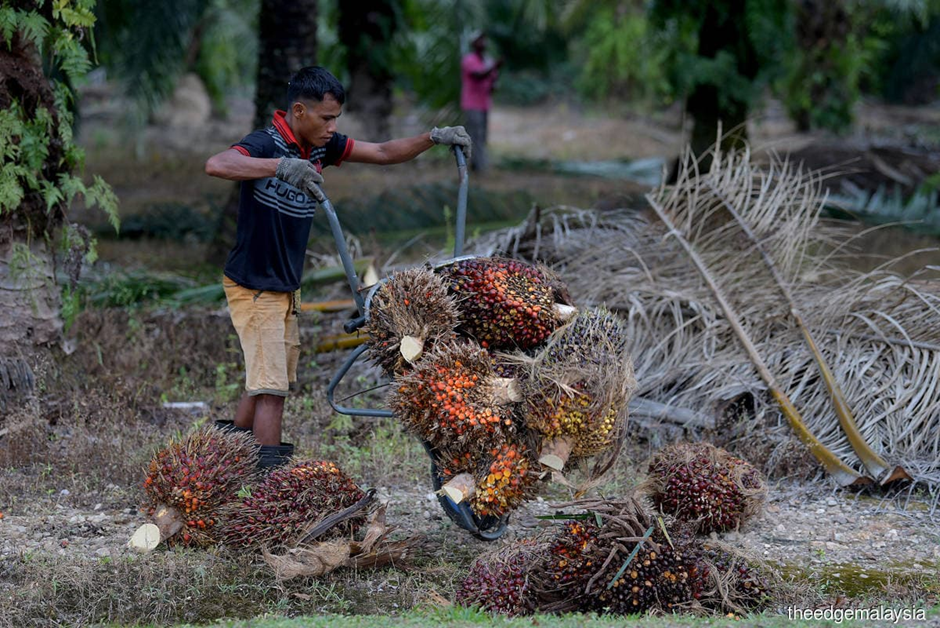El Niño Expected to Have Minimal Impact on Palm Oil Production
- Asia Palm Oil Magazine

- Feb 1, 2024
- 4 min read
Although the El Niño weather phenomenon is expected to last until April according to weather and climate monitoring bodies, the persistent rainfall observed in Malaysia of late begs the question of how strong an impact it would have on crude palm oil (CPO) production.
Earlier last year, the scorching heat that sent temperatures soaring in this region had many wondering whether El Niño was in the offing after an absence of three consecutive years.
El Niño brings hot and dry weather to Malaysia and Indonesia — at times, drought in severe cases — a concern to the world’s main producers of palm oil should the agricultural commodity’s production and yield be impacted. In other parts of the world, the weather phenomenon causes wetter than usual conditions, such as along the Gulf Coast from Texas to Florida.
Interestingly, the El Niño event this time round appears different from the last. As the World Meteorological Organization highlighted, no two such events are exactly the same.
“The impact of this El Niño is different from previous events as it did not bring prolonged dryness or drought to Malaysia and northern Indonesia — northern Sumatra and northern Kalimantan — due to the late coupling of the oceanic and atmospheric indicators. That is why we are still receiving good rainfall in Malaysia, especially with the onset of the northeast monsoon,” says Ling Ah Hong, director of Ganling Sdn Bhd, which focuses on plantation research and consulting.
Nevertheless, some prolonged dryness is happening in southern Indonesia, namely southern Sumatra, southern Kalimantan and Java, he adds.
What does this mean for CPO production and prices in 2024, taking into account the time lag of six to 12 months before fruit production is affected? “Based on our analysis of weather information to date, the impact of the current El Niño on palm oil yield and production will likely be minimal in Malaysia and mild in Indonesia compared to previous events and it will be nowhere near that of the 2015/16 super El Niño,” opines Ling.
During the super El Niño cycle in 2015, temperatures soared to as high as 39.3°C in Malaysia, contributing to a 13.2% decline in the country’s total palm oil production to 17.32 million tonnes in 2016 from 19.96 million tonnes in 2015. Concurrently, palm oil stocks declined 23.2% to 21.28 million tonnes in 2016 from 27.69 million tonnes in 2015.
In its Dec 5 report, CGS-CIMB Research says the El Niño phenomenon has turned out to be “less severe and shorter term than expected”. Hence, it is anticipating CPO production in 2023 and 2024 to reach 18.6 million tonnes and 19.2 million tonnes respectively. This represents a year-on-year production growth of 1% in 2023 and 3% in 2024.
In 2022, Malaysia produced 18.45 million tonnes of CPO.
“Our higher CPO production projections also factor in a recovery in the labor force as estates have been receiving foreign workers in stages since end-2022, while there have been improvements in fertilizer application,” the research house adds.
CGS-CIMB Research says it would be “difficult” for CPO to trade significantly above RM4,000 per tonne for an extended period in the future given the current normalisation of plantation activities and supply chains. It forecasts that without any material supply shocks, the commodity’s price will average RM3,800 a tonne in 2023 and RM3,700 a tonne in 2024.
While a worse-than-expected El Niño could lead to lower fresh fruit bunch (FFB) yields in 2024 and drive CPO prices up, the current price levels have already reached those recorded during previous severe El Niño events, says the research house.
For example, during the 2015/16 El Niño, CPO prices rallied in 2016 and the first quarter of 2017, surging from RM2,198 per tonne on Dec 31, 2015, to RM3,202.50 per tonne on Dec 30, 2016, before hitting a high of RM3,344.50 per tonne on Feb 10, 2017.
Currently, CPO prices are hovering at RM3,600 to RM3,700 per tonne. Year to date, the CPO third-month futures contract had fallen 12% to RM3,693 per tonne last Wednesday.
In its Nov 22 report, BMI Country Risk & Industry Research forecasts CPO prices to average RM3,515 per tonne in 2024, representing a 7.5% year-on-year decline from its 2023 forecast. “It remains our view that the global palm oil sector will generate a production surplus of 1.2 million tonnes in both 2022/23 and 2023/24, compared to an average surplus of the five most recent completed seasons of three million tonnes which, in conjunction with support from the Brent market, will insert a floor under prices,” it says.
Meanwhile, Hong Leong Investment Bank Research in a Dec 6 report notes that most planters believe the monthly FFB production is likely to have peaked in October and that the current El Niño phenomenon will only impact FFB output minimally in 2024. The research house has a CPO price assumption of RM3,850 per tonne for 2023 and RM4,000 per tonne for 2024. It was neutral on the sector.
It maintained its neutral stance in a subsequent report. For exposure to the sector, it recommends IOI Corp Bhd and Hap Seng Plantations Holdings Bhd.
CGS-CIMB Research retained its “underweight” rating on the sector, with “sell” recommendations on IOI Corp and FGV Holdings Bhd and “buy” calls on Genting Plantations Bhd and Ta Ann Holdings Bhd.
Source: theedgemalaysia.com











